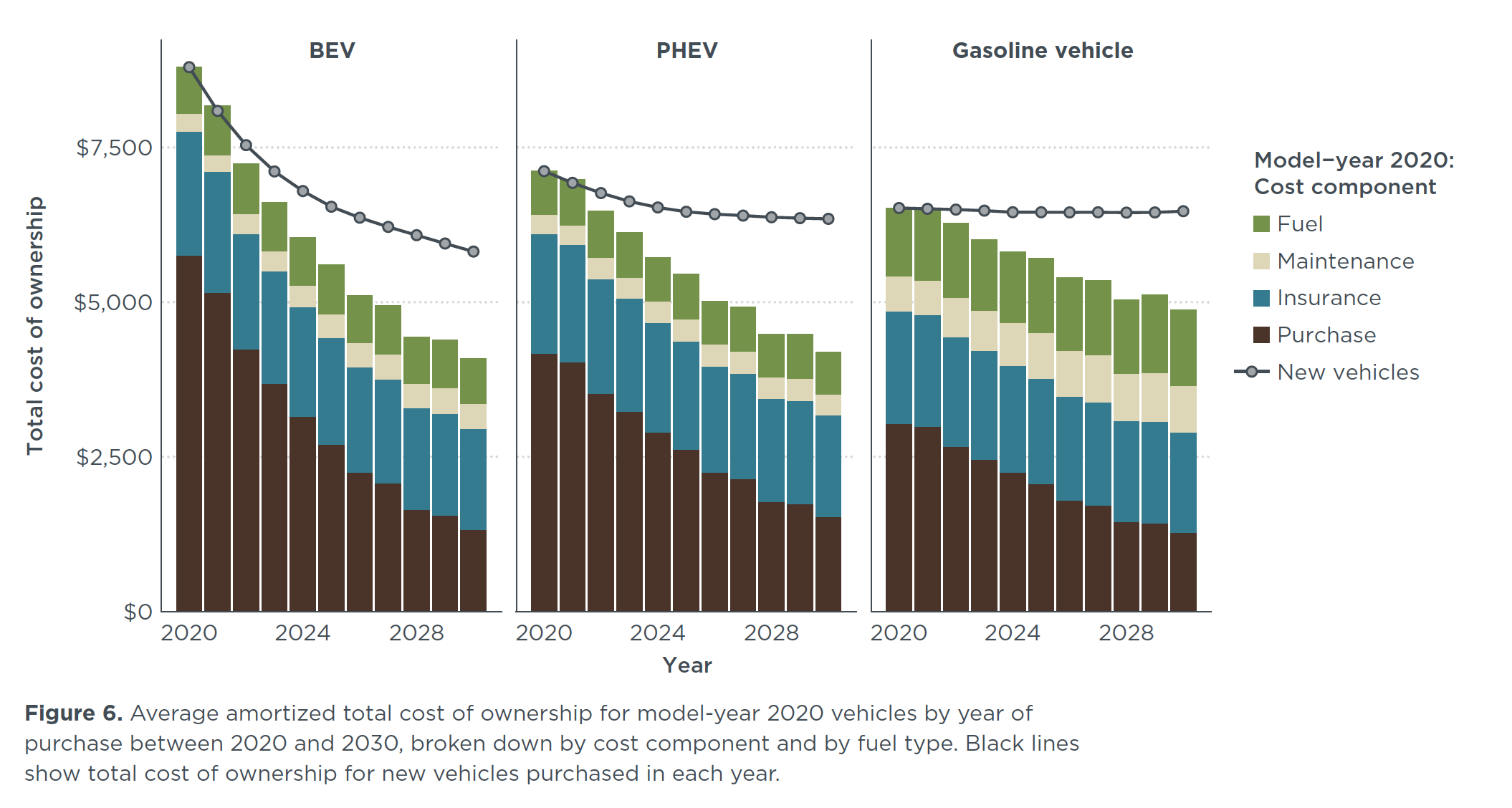Working Paper
When might lower-income drivers benefit from electric vehicles? Quantifying the economic equity implications of electric vehicle adoption
This analysis finds that cost reductions in new electric vehicles (EVs) will lead to decreased used EV prices and cost parity with used gasoline vehicles for low-income households in the 2025-2030 time period.
Higher rates of depreciation for first owners of EVs will lead to larger benefits for lower-income second owners. By 2029, EVs will reach upfront price parity with the average vehicle purchased by a low-income household, less than two years after the average vehicle purchased by a high-income household. Currently, once accounting for fuel and other operating savings, some households in all income groups could save money by replacing at least one vehicle with an EV; this increases to 45% of households by 2025 and 95% of households by 2030.
Savings from EVs relative to income are significantly higher for low-income households, non-White households, and households in areas with higher levels of pollution. For car owners in the lowest-income quintile, savings from switching to EVs amount to $1,000 per household annually, or 7% of income, by 2030.
Even with widespread EV affordability, additional policy action would ensure equal access to EVs. Previous studies have shown that low-income EV buyers are more responsive to incentives, and that purchase incentives have become more important over time. Combustion vehicle phase-out regulations can force manufacturers to serve diverse markets, and broader access to financing for EVs will be critical for low-income households. In addition, policymakers will need to ensure targeted deployment of home and public charging deployment to support vulnerable communities and renters with less charging access.
